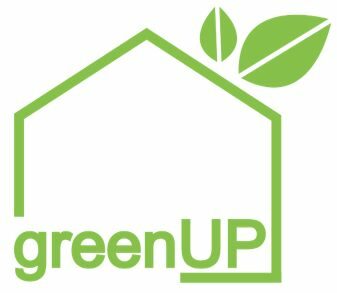The largest settlements and neighbourhoods with sustainable objectives in Europe are:
- in Koppenhagen on "Avedøre Holme" (Denmark) is to be increased to nine artificial islands a large, new district "Lynetteholm" is being built. The plan is to build ~20,000 flats for 35,000 Copenhageners (1/4 of which social housing), just as many jobs and 700,000 square metres of green space. High climate protection requirements are being aimed for. The Danish government wants to create one of the largest, most sustainable and innovative business parks in Northern Europe. By building the offshore islands, Koppenhagen is to be better protected against storm surges and rising sea levels - without high dikes and other protective structures in the inner city area. Possible start of construction: 2035
- in Munich Freiham is being built on 350 ha of residential space for 20,000 and commercial space for 7,500 people. The goal is sustainable urban development that meets economic, ecological and social requirements in equal measure.
- the largest ecological urban district in Europe outside Germany is being built in France: a Sustainable Neighbourhood is to be created on more than 200 ha for 30,000 private individuals in Montreuil, France. The neighbourhood is part of a new development area totalling 892 ha and is being funded with 3.5 million euros from the NQU initiative (Nouveaux Quartiers Urbains = New Urban Districts).
- The largest sustainable housing development in Europe, with 2,900 flats on an area of 170 hectares, is located in Holland: Stad van de Zon (City of the Sun) Heerhugowaard:
http://sdg21.eu/db/stad-van-de-zon-heerhugowaard - the Bahnstadt Heidelberg was completely renovated as the largest CO2-neutral in operation (electricity and heat) on an area of 116 ha. Around 3,700 flats have been built
- New development quarter in Helsinki: for 16,000 inhabitants and 6,000 jobs on a 100 ha site, a CO2-neutral quarter with a mix of uses is to be built according to plans by Sauerbruch-Hutton (Berlin):
www.arup.com/projects/low2no - the inner city Rosenstein Quarter is being built in Stuttgart on 100 ha
- Würzburg Hubland with 95 ha, CO2-neutral and for 4,500 inhabitants (under construction)
- the second largest passive house development in Europe (realised) is "Eurogate" in Vienna with 824 flats in passive house construction in the first phase by 2012 and another 1,000 units by 2014 in the second phase. Left: www.derstandard.at/... (14.04.2010) and www.passivhausprojekte.de/... & www.passivhausprojekte.de/...
- The largest cohesive car-free settlement is the GWL-Terrein in Amsterdam with 600 sqm
- The largest urban district in timber construction will be built in Berlin with 5,000 residential units: "Short info and photo gallery
- Germany's largest timber housing estate is in the building area of Prince Eugene Park with 566 flats. Completion: 2020
- the Largest passive house development in NRW for 535 students is available in Münster in the housing complex on Boeselagerstrasse (realised in 2014).
- an overview of Plus-energy settlements and quarters offers this Website. The largest is in Graz with 143 WEs.
Further links (Europe)
Handbook of Sustainable Urban Development Strategies
Fioretti, C., Pertoldi, M., Busti, M. and Van Heerden, S. (eds), Handbook of Sustainable Urban Development Strategies, EUR 29990 EN, Publications Office of the European Union, Luxembourg, 2020
https://publications.jrc.ec.europa.eu/…handbook_of_sustainable_urban_development_strategies__pdf_2.pdf
European Sustainable Cities & Towns Campaign
The Campaign supports transfer of knowledge and exchange of experience in the field of urban sustainability and Local Agenda 21 in Europe, thereby helping implement the concept of sustainable development. It provides central access to comprehensive and up-to-date information relevant to all those working towards sustainability in an urban context.
https://sustainablecities.eu
International urban and settlement projects (not systematically updated; status: 11/2008)
EcoCity Dongtan China, Ove Arup London:
10,000 inhabitants by 2010, 80,000 inhabitants by 2020 and 500,000 inhabitants by 2050
www.lafargeholcim-foundation.org/...dongtan-eco-city-urban-concept-shanghai-china
Tianjin Eco-City, China
www.tianjinecocity.gov.sg
EcoCity Wanzhuang China, Ove Arup London:
330,000 people by 2025
www.springerprofessional.de/...china-als-versuchslabor-fuer-die-stadt-der-zukunft/6594894
EcoCity (and car city) Changchun China, AS&P Frankfurt:
Originally planned as an EcoCity, it then became a car city. 300,000 inhabitants by 2020 for Expo2010 in Shanghai
www.baunetz.de/...Speer_baut_Autostadt_in_Chanchun_22598.html
EcoCity Tainan Taiwan, Joachim Eble Architecture Tübingen:
40,000 p.e. until 2025
www.eble-architektur.de => Plan => Tainan
Maidar City" (Mongolia)
www.deutschlandfunkkultur.de/architekt-ueber-maidar-city-mongolei-plant-oeko-stadt...
Masdar Abu Dabi, Foster London
60,000 p.e. by 2020
www.masdaruae.com
Link (International)
SDG Cities Programme
A global initiative that aims to harness the potential of cities to promote sustainable development and well-being for all.
https://unhabitat.org/programme/sdg-cities
